The Omicron outbreak is still ongoing in Iran. Health officials now say that for the time being, any and all cold symptoms must be treated as suspected Covid-19. But they face resistance from large swathes of the Iranian population desperate to return to normal life, in many cases for financial reasons. Meanwhile, President Ebrahim Raisi called on people to “enthusiastically” take part in rallies celebrating the anniversary of the 1979 Islamic Revolution.
Confusion reigns. And as ever, the low availability and high cost of tests for coronavirus means the public has an unclear picture of how serious the current outbreak is.
How Are the Hospitals Doing?
The number of outpatients visiting hospitals has increased significantly in recent weeks. Dr. Alireza Zali, director of Tehran Coronavirus Taskforce, said on February 5 that the figure in Tehran alone had increased by 157 percent in three weeks, and the number of patients in ICUs by 51 percent. Reports from other provinces paint a similar picture.
“We sat back idle and now the virus has taken over the whole town.” So says Setareh, a hospital worker in Gorgan, the provincial capital of Golestan in the northeast. “In the past two weeks,” she told IranWire, “90 of the 150 people who work in the operating rooms have been infected. And that ought to be the last place where the virus is spreading.” Some of those staffers, she said, were being treated in their workplace while others were sent home for a week to recover.
“We don’t admit many of the patients who come to the hospital. Of course, we do admit those who’re in a very grave condition. But management has ordered us to fill as few beds as possible to be ready for the peak of the sixth wave.”
The latest figures announced by the Health Ministry, detailed below, show the number of hospital admissions across the country has increased considerably. In the week ending February 10, the number of daily recorded mortalities from Covid-19 – likely a fraction of the real figure – hit three digits again.
Guidelines From the National Coronavirus Taskforce “Ignored”
The National Coronavirus Taskforce recently asked airline companies to reduce the number of passengers on domestic flights to 60 percent capacity. The directive was due to take effect on Wednesday, February 9. But on at least some internal flights the planes are still full.
Sanaz, a tour guide, told IranWire that she had flown from Tehran to the southern province of Hormozgan on Thursday, February 10, despite having symptoms of Covid-19 she had not been able to test for, and the plane was at capacity. “The company got me my ticket. In the past few days I’d had a runny nose and a sore throat. I told the company about this but they insisted I had to go. I don’t know whether I had Covid or not but either way, I was able to board the plane.
“Some of the passengers didn’t care that the plane was full up. A lady who was sitting next to me objected to my runny nose and then complained to the flight attendant. I had made myself board the plane because I was under the impression it would be filled up to just two thirds of capacity. Some of the passengers must have been infected, through me.”
Had she refused to fly, Sanaz said, she might have lost her job. Both in Tehran and before her connecting flight to Bandar Abbas, Hormozgan, no temperature checks were being carried out at the airports.
The issue of planes flying at more than 60 percent capacity is nationwide. Iran’s Civil Aviation Organization says it has informed airlines of the directive. But five Iranian companies have publicly stated they cannot comply because they were not informed in time, and had sold all their tickets for the next three months. Many other orders from the National Coronavirus Taskforce have also not been carried out because the infrastructure for the Iranian government’s so-called “Smart Covid Management” project does not exist.
Confusion between Omicron and the Common Cold
Recently, a joke has been circulating on Persian-language social media: “There is no illness called the cold. Fellow Iranians, don’t deceive yourself!” It paints an accurate picture of the situation inside the country, however; the cold and flu season has meant many in Iran now forgo self-isolation if they fall ill, on the assumption it isn’t Covid-19.
Dr. Sahar Motallebi, a population health expert based in Sweden, told IranWire the main issue was the dearth and expense of coronavirus tests: an issue also repeatedly flagged by the World Health Organization. “The level of testing should be at least 10 times the number of positive cases,” she said. “From the start of the second half of 2021 until two months ago, the ratio in Iran was six.” The ratio has stood at 20 in other countries that have managed coronavirus better and experienced milder peaks.
The high cost of procuring a test, Dr. Motalebbi said, is proving an obstacle for many families. “Usually in Iran, if one member of the family tests positive, others in the family who could well be infected do not take a test. And the official number of [coronavirus] cases is based on the tests that do come back positive. The real number of infections could be two to five times the official figure.”
The government reports that every day, currently around 100,000 coronavirus tests are being conducted in Iran. Of this figure, 30,000 to 40,000 are coming back positive. The tests are unable to distinguish between Omicron and other variants because, health officials confirm, Iran does not have sufficient facilities to test for Omicron specifically.
Official mortality figures have indicated that the true death toll from Covid-19 in Iran could be 2.8 times the number detected in state-run hospitals. If this is so, then the real number of deaths from Covid-19 on Tuesday, February 10 alone, recorded as 130, could have been more than 350.
Official Coronavirus Statistics
According to the Health Ministry’s weekly statistics, a total of 670 patients are known to have lost their lives to Covid-19 in the week ending February 10. With 130 deaths, February 10 had the highest officially-recorded number of fatalities for the week.
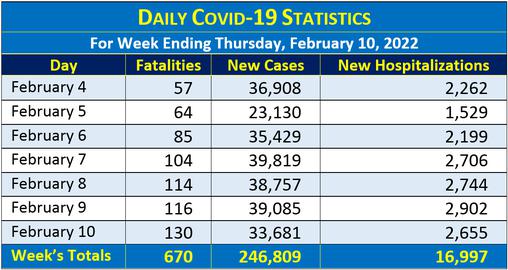
At the week’s end, 3,097 Covid-19 patients in Iran were being treated in ICUs. According to the Health Ministry, at the time of writing the total number of vaccine doses injected had reached 136,862,214.
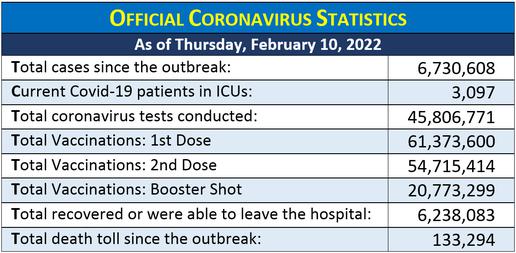
There are currently 120 Iranian cities on red alert for coronavirus transmission. Another 153 are rated orange and 167 are yellow. Currently only 8 cities in Iran are on “blue” alert.
Related Coverage:
Iran’s Omicron Crisis: Scapegoats, Wrong Turns and Political Moves
Top Health Ministry Clinician: Omicron Cases in Iran Four Times Our Official Figure
Covid-19 Cases on the Rise as Omicron Sweeps Through Iran
'Back to Square One': Health Ministry Confirms Sixth Wave of Coronavirus in Iran
Iran's 'Smart' Covid Pass System Blighted by Low Resourcing
Iranian Officials Promote Disinformation About Hybrid Covid-Flu 'Super-Virus'
Vaccine Imports 'Banned' in Iran, Drug Administration Boss Claims
Health Minister Blames Iran's Early Vaccine Crisis on 'Political Pressure'
Iran Struggles to Record Omicron Cases Amid Dearth of Test Kits
Iran's Ambassador to Yemen Dies of Coronavirus
Iran's New 'Smart' Project Proposes Vaccine QR Codes for Offices and Supermarkets




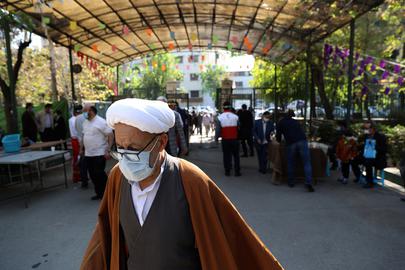

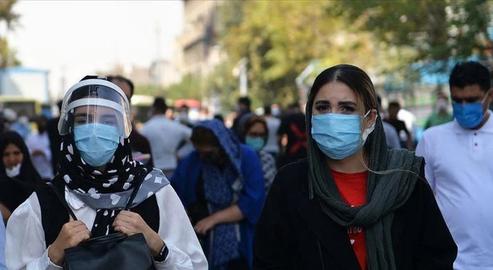
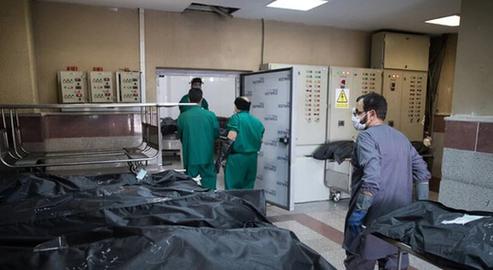

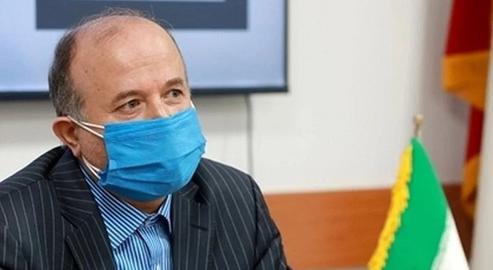

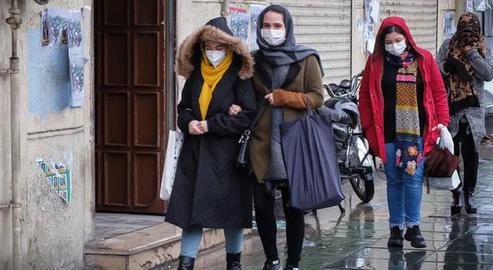

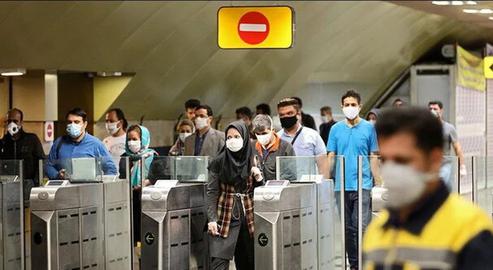
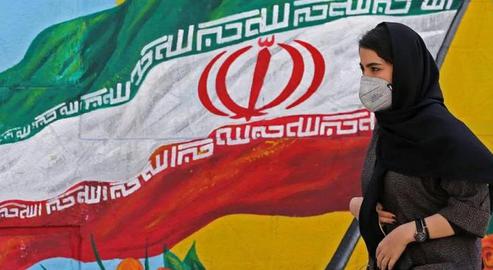
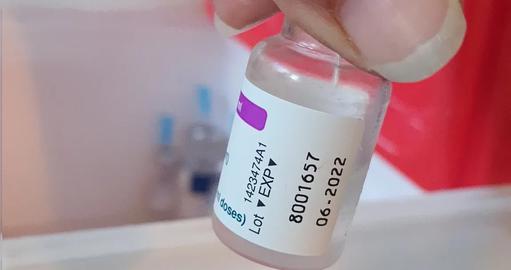

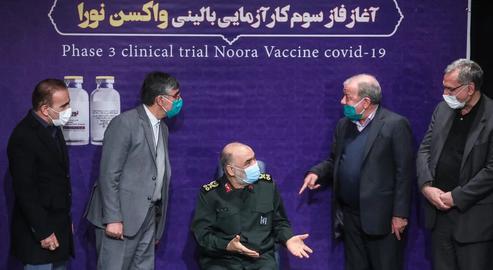
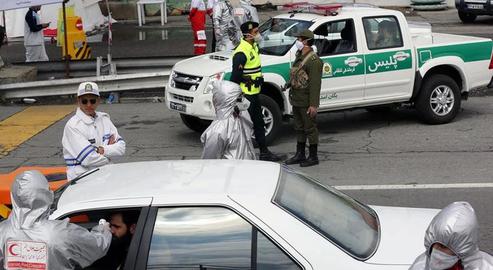


comments